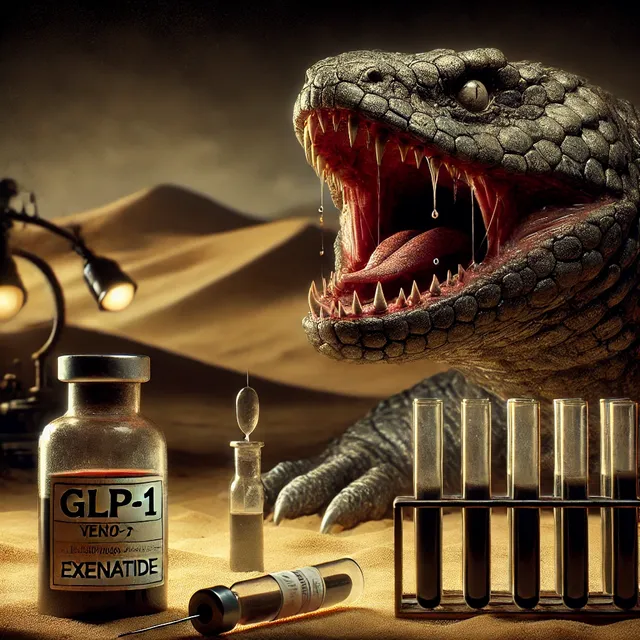Glp-1's are actually venom?

GLP-1: From Venom to Your Veins – The Dark Side of a So-Called Miracle Drug
Pharmaceutical companies love to market GLP-1 receptor agonists—like Ozempic and Wegovy—as groundbreaking treatments for diabetes and weight loss. But what they don’t emphasize is their unsettling origin: a venomous lizard.
That’s right—these drugs can trace their roots back to the toxic bite of the Gila monster (Heloderma suspectum), a venomous reptile from the southwestern U.S. and Mexico.
But is it really a wonder drug, or are we playing with fire?
From Lethal Venom to Laboratory Formulas
The Gila monster injects venom into its prey, causing paralysis and a dramatic drop in blood sugar. Scientists discovered that its venom contains exendin-4, a peptide that mimics a human hormone, GLP-1.
What does GLP-1 do?
It slows digestion, keeping food in your stomach longer.
It stimulates insulin production, lowering blood sugar.
It suppresses appetite, making people eat less.
Sound familiar? These effects are precisely what make Ozempic and similar drugs so popular. But there’s a catch—the body doesn’t naturally produce venom peptides, and we have no idea what the long-term consequences of this manipulation might be.
Unnatural Weight Loss: At What Cost?
GLP-1 drugs work too well, suppressing hunger so aggressively that people barely want to eat. While this might seem like a miracle for weight loss, it raises serious
Was your downvote to my account intentional?
Accident I'm new